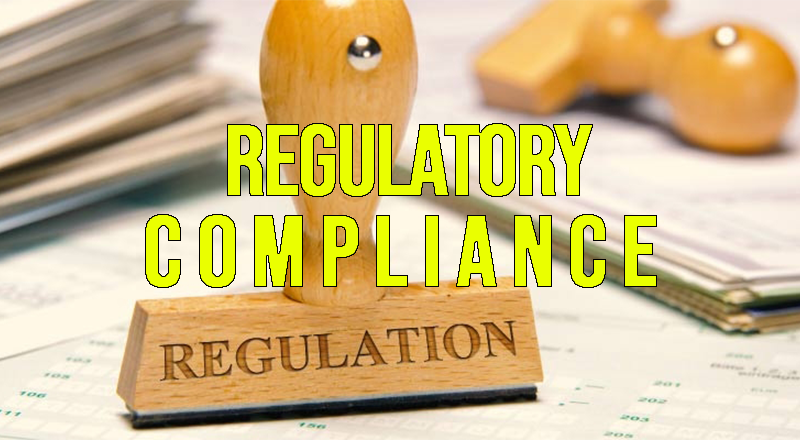Discover how human errors contribute to 70% of compliance issues in life sciences. Learn strategies to empower your team and enhance regulatory compliance. Contact BioBoston Consulting for expert support!
How can you give your team the space to become the backbone of compliance?
In life sciences industry which is complex and heavily regulated, precision and compliance with regulatory standards are very important. Therefore the role of human exceptionalism cannot be overstated.
In this article, we are going to explore the topic of “The Human Factor in Regulatory Compliance,” what it means, what causes it and most importantly, how to empower your team to ensure that they remain the backbone of compliance.
Compliance Implications — Are You a Bank (In The Eyes of FerBIs)?
The life sciences industry is all about regulatory compliance. This assures the safety, efficacy and quality of a product including pharmaceuticals, medical devices, or biologics. If they fail to do so, it has significant issues such as product recall, legal implications and reputation loss but most importantly patient safety risks.
Compliance depends on the processes, documentation, standards followed and on the individuals who implements these protocols. Preventing human errors plays a vital role in streamlining for compliance..
What The Human Factor Entails
Human factor spans all aspects of human characteristics and behaviour which can affect compliance. These are multi-faceted and encompass everything from knowledge on their competence , their ability to communicate or make decisions.
Knowledge & Training:
The first step to be compliant is by acquiring knowledge and training. There should be a thorough compliance of regulatory requirements, industry standards and internal processes among team members.
Communication:
Sound communication is essential in communicating compliance needs, recording concerns, and broadcasting status updates across the organization.
The devil is in the details, particularly when it comes to compliance. Those with a high attention to detail must execute the process, making sure no crucial steps or documenting are skipped.
Complexity of decision-making:
Many times, complying with a regulation means making decisions in high-pressure and complex circumstances. It is crucial to have them to take decisions that are both sound and compliant.
Regulatory change is ongoing, and your compliance team needs to be able to understand new and changing requirements.
Alarming Statistic:
70% Compliance Errors
This is the life of a compliance officer, and one stat in particular jumps out: human error causes 70% of all compliance issues. Errors can be as simple as little oversights and misunderstandings to more complicated ones caused by ignorance or a wrong interpretation of the regulatory field.
Human Errors That Could Plague Compliance
Documentation errors: Failure to keep accurate and complete records is a frequent (yet avoidable) problem area for those under CMS scrutiny. If documentations are either missing, incorrectly completed or not up to date this can result in serious regulatory offences.Training gaps: inadequate training can lead to staff not fully grasping their compliance roles or the latest regulatory updates.
Communication Breakdown: Miscommunication can occur causing misunderstandings, misinterpretation of what is required for compliance or not being aware of new standards in place that might impact everyone involved.
Failure to Follow Protocols: Often, employees may take shortcuts or deviate from standard protocols and jeopardize the compliance.
Unaware of Changes: Regulations are changing all the time. Failure to keep pace with the changes can mean non-compliance.
Enabling your staff for success
This raises the question on how can organizations enable their teams so that they are better able to prevent human errors and enforce regulatory compliance? Some strategic avenues to explore here include:
Comprehensive training programs: Develop programs that include in-depth training on the various acts and rules, industry standards, and internal procedures that the employees must conform to. Training should be continuous and flexible to change with an ever-shifting compliance environment.
Clear communication Establish a culture of clear communication. Teach employees to question, clarify, and raise concerns without fear of retribution.
Highlight Detail Orientation: Create a culture that value and rewards attention to detail. Identify and reward those who pay regular attention to the details in their work.
Designated Quality Assurance Teams: Establish quality assurance teams or positions at the entity level to monitor compliance activities, audit performance and catch issues early.
It would reduce the probability of human errors where technology and automation can be leveraged to perform data entry & record keeping (routine) tasks.
Learning Culture: Support a learning culture, where it is safe to try novel approaches and learn from failed attempts.
Enable Decision Making: Provide employees with the correct tools and knowledge to take the right decision (compliance centric) even under pressure.
Root Cause Investigation:
When compliance issues are detected, follow up with a root cause analysis to uncover the reason for the mistakes and implement corrective and preventive activities.
Conclusion
The human element should not be underestimated. The alarming 70% of compliance errors are due to human factors. Therefore, emphasise the need for you to make your team the bulwark behind the fortress of compliance excellence.
We are a quality and regulatory consulting firm, and we know how complex compliance challenges can be.
After all, meeting standards is one thing, ensuring the health and safety of patients (and protecting your name) is quite another. When you spend time and energy developing your team, acknowledging their importance to the overall function and process of compliance, you point yourself towards a future wherein fewer missteps are taken, and where the best-case-scenario results from all those regulatory promises can come true.
Contact BioBoston Consulting today OR go to our website, so we can work together with your organization!


